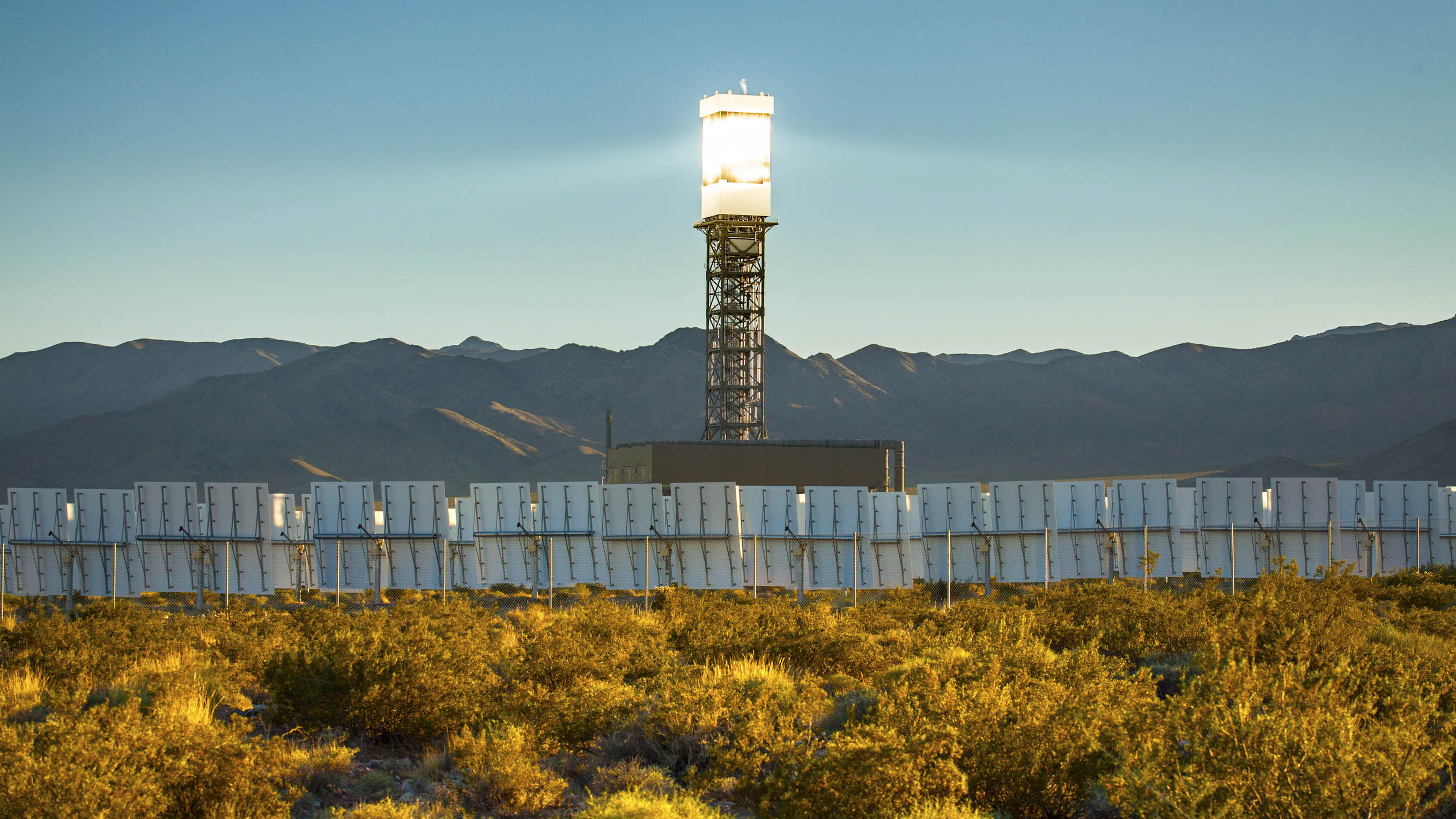The Ivanpah Solar Plant Kills Birds. Could Video Help?
At the northeastern edge of the Mojave Desert in California, in the futuristic field of mirrors and towers that make up the Ivanpah Solar Electric Generating System, scientists and engineers are urgently looking for ways to stop an unintended consequence of clean-power technology: the deaths of thousands of birds that crash into its towers or fly into superheated fields of concentrated solar thermal power.
In part, the effort to save the birds has been stymied by the difficulty of finding and counting the victims. But now researchers from the U.S. Geological Survey are reporting that video surveillance appears to be a better detection tool than other methods that have been tried so far, like radar and carcass collection.
The Ivanpah plant, in commercial operation since February 2014, uses a technology called concentrated solar power, or CSP. An array of mirrors directs powerful beams of sunlight to boil water flowing through tall towers. That creates steam to generate electricity.
But the technology makes it hard to detect and count dead birds. The towers “create noise on radar called clutter, and this effectively blinds the radar to what is happening in the immediate vicinity of the tower,” said Robb Diehl, a USGS scientist and a lead author of a new study in PLOS One about video surveillance at Ivanpah.

A field of heliostats reflect sunlight towards a central tower at Ivanpah Solar Electric Generating System.
Visual: Craig Dietrich/Flickr
In a monitoring report published in June, 1,000 dead birds were collected from 2014 to 2015, but fatalities during that time were estimated to be over 6,000. The USGS report noted that some birds may be completely incinerated when they hit the solar flux, making it impossible to count them. Certain weather conditions may also make it difficult for human observers to be on the ground.
The benefit of video then, according to Diehl, is that it can clearly capture images of Ivanpah’s towers in all weather conditions, without interference, and can differentiate between bugs, birds and bats, which can help scientists more accurately tally the deaths.
For the study, Diehl and his colleagues tested five video cameras and one radar system at Ivanpah over several weeks in 2014. The two clear winners were thermal-surveillance and wide-dynamic-range cameras, which are designed to work best in high and low-light conditions. They gave clearer results than radar or the other video cameras tested — scientific-grade thermal, near-infrared, and ultraviolet.
The scientists also found the cameras more practical and efficient than low-tech methods like collecting carcasses or visually scanning the desert sky. And video footage can be reviewed repeatedly, allowing scientists to better analyze the plant’s effects on wildlife.
Still, even video technology cannot always identify wildlife species with certainty, making it difficult to understand which types of bugs, birds and bats are attracted to the facility and are experiencing the highest mortality rates. This raises a further question: Are bugs with an affinity for light drawn to Ivanpah, and are they attracting insect-eating species of birds and bats?
“We’re not sure, but it seems plausible,” said David Knox, senior manager of external communications at NRG Energy, which operates the plant. “So we’re trying to reduce the presence of all insects around the towers, replacing conventional lights with LEDs.”
Diehl says it’s possible that light-attracted insects, as well the birds and bats that feed on them, simply exist in high populations near Ivanpah, so they may only appear to be dying at a greater rate than non-insect eaters. Or, he adds, Ivanpah’s glowing light could make insects more visible to their predators.
Even with those caveats, video monitoring could guide NRG Energy’s mortality-prevention strategy. Thermal-surveillance and wide-dynamic-range cameras “could provide a platform of sensors to efficiently monitor the airspace near solar towers and accurately identify targets within the solar flux field,” the scientists concluded in their report.
While the thousands of birds estimated to have been killed at Ivanpah is tiny compared with other causes of bird mortality, such as predation by house cats, collisions with windows, and the burning of fossil fuels, experts say it’s important to understand the impact CSP plants have on wildlife.
And environmentalists say the deaths are a serious obstacle to the construction of other such plants.
“How many years of monitoring, how many body counts before we take action?” asked Garry George, chapter network director of Audubon California. The organization, he added, “is very alarmed and does not support concentrated solar power technology going forward.”
Erica Cirino is a freelance science writer based in New York. She covers wildlife and the environment, and specializes in biology, conservation, and policy.











Comments are automatically closed one year after article publication. Archived comments are below.
Erect a dome and say hello to the new Solar City!